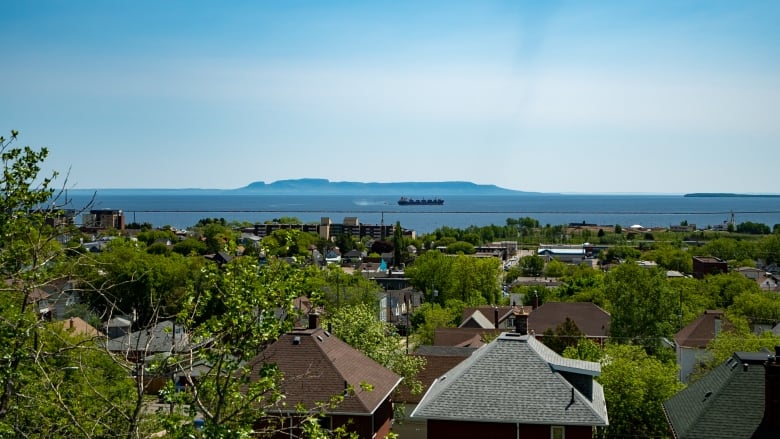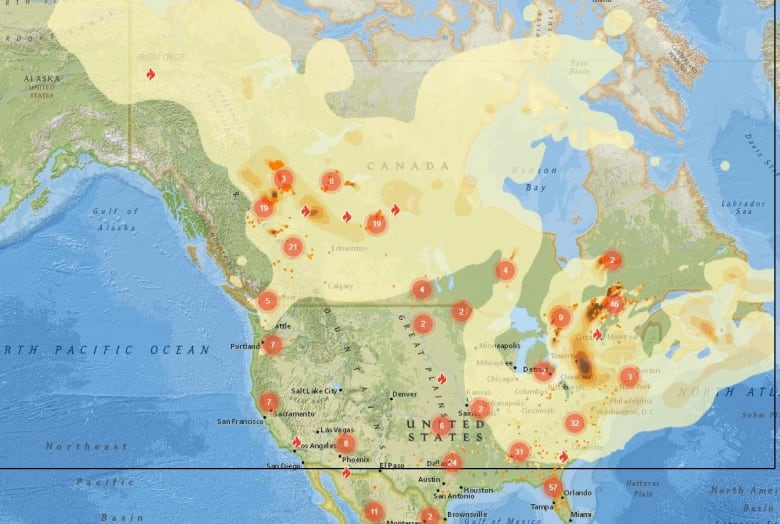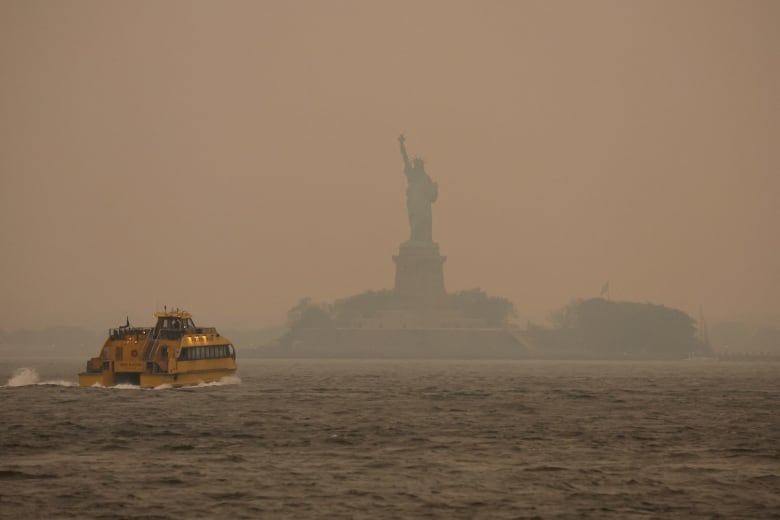Why Thunder Bay is an oasis of clean air amid apocalyptic scenes of wildfire smoke across Canada, U.S.
High-pressure systems, lack of local fires, prevailing wind patterns keeping skies clear

For several days, yellow haze from the more than 130 Quebec wildfires has covered cities like Toronto and New York, while smoke from fires in northern Alberta has been blanketing the Prairies.
Communities in southern Ontario, particularly Ottawa and Toronto, have issued air quality alerts. Due to the contaminated air, officials are urging people to stay indoors.
Overall, officials say, more than 400 wildfires were burning in Canada on Thursday.
But between those plumes of smoke in Western Canada and Ontario is a pocket of cool, clean air in northwestern Ontario, around Thunder Bay, with a few key weather patterns acting as a buffer — protecting the region from the worst effects of the smoke.
According to modelling from Fire Smoke Canada, the Thunder Bay region is one of only a handful of areas across Canada not affected by smoke in some way.

CBC News spoke to Monica Vaswani, a warning preparedness meteorologist with Environment and Climate Change Canada, to help explain why.
She said three main factors are keeping the smoke away:
- Though northwestern Ontario has about 23 active fires, none of them are close enough or big enough to create smoke plumes that would reach Thunder Bay.
- A high-pressure system sitting over the region is bringing sunshine and acting as a bit of a buffer against the smoke from elsewhere.
- The wind is coming in from the east, pulling in clean air from Lake Superior and the Great Lakes.
"You're pulling in air from the lakes, you're pulling in clean air, you're not getting that smokey air that southern Ontario is seeing right now," she said. "The question becomes where are the fires and what is your wind direction?"
Vaswani said location of the fires and wind direction are why the smoke is concentrated in southern Ontario and eastern Quebec.
"The smoke is just being pushed right into those urban centres, whereas Thunder Bay is well west of that, so you're not experiencing any of that smoke."

The wildfire smoke has been especially disruptive in the northeastern United States, chasing players from ball fields, delaying flights and sparking a resurgence of wearing masks outdoors.
U.S. officials warned residents to stay inside and limit or avoid outdoor activities again, extending Code Red air quality alerts in some places for a third straight day Thursday, as forecasts showed winds continuing to push smoke-filled air south.